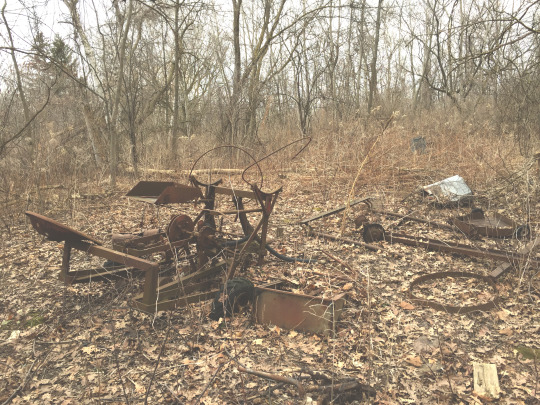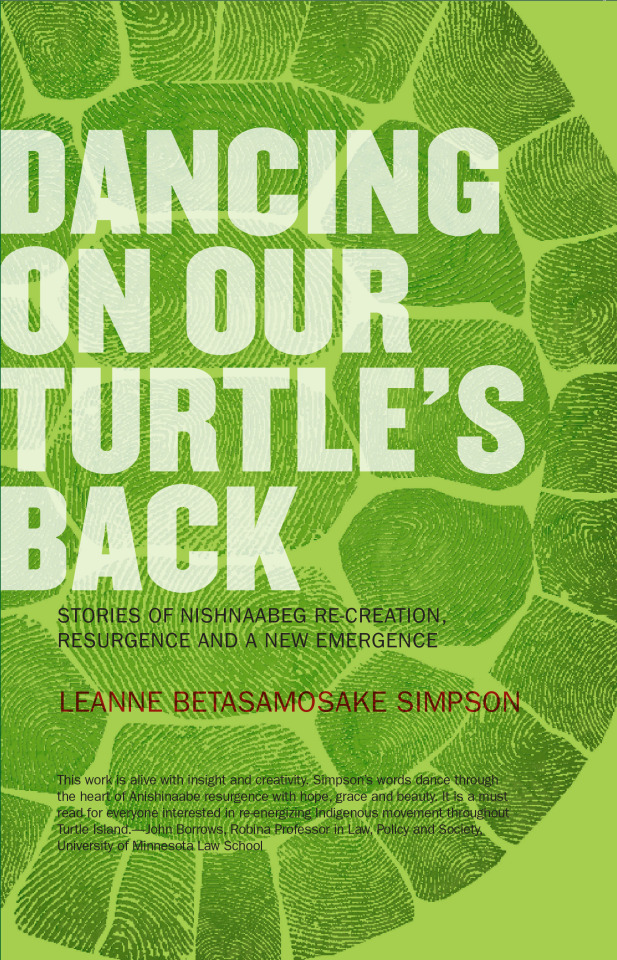#and the religious implications of both... preserving god's creation in a life-like way
Explore tagged Tumblr posts
Text
according to like all the papers i've been reading about it there was / is a lot of discourse about whether Frederik Ruysch should be considered and artist or a scientist and i say it completely goes hand it hand, it doesn't have to be either or... he clearly did a lot of things that went beyond scientific curiosity but also made so much scientific progress so yeah... both
#and the religious implications of both... preserving god's creation in a life-like way#but also the reminder that death is inevitable and everything is temporary#baroque is a fascinating period in time#full of contradictions that make PERFECT sense when you think about it for longer#art history takes you weird places sometimes#dark academia#uni blogging#academia#art history#frederik ruysch#my post
1 note
·
View note
Text
“…First and foremost, one of the strongest and most fundamental influences on medieval scholarship about women throughout the entire Middle Ages was the bible. Christian writers relied on the bible because of the fact that it represented God’s holy word, and as such offered important and (at least theologically) irrefutable ideas about women, the majority of which cast women in a decidedly negative light.
To be sure, there were (and still are) biblical verses that portrayed women in a more favourable – even militant – light, such as Deborah, a prophetess and leader of Israel who helped guide the Israelite army to victory over the Canaanites, and Jael, who it is written killed the Canaanite general Sisera, but the overall image of women is a negative one. Various passages throughout the bible reiterated how women were supposed to be, for instance, silent in public, submissive to their husbands, periodically unclean to touch, and scheming seducers of men.
Yet it was the Genesis story of creation and the Pauline Epistles which were to exert the most influence upon medieval conceptions of women. Indeed, Paul himself used the Genesis creation story, specifically the idea that women were created of man and that they caused the Fall of Man, to justify man’s superiority over women and show how women cannot be trusted and require male guidance. Similar concerns about women were displayed by the early Church Fathers, whose writings bridged the gap between the biblical and the medieval period and helped formulate much medieval Christian doctrine.
Their thought is indicative of why later medieval conceptions of women were primarily negative. There is, for instance, the uncompromisingly misogynistic view of writers like St Ambrose (c.338- 397) and St Jerome (c.347-420), who contended that ultimately women were the root of all evil and defined them primarily as lustful beings who must strive for the ascetic life in order to be reconciled with God. Only through a life of reflection and controlled living could women achieve salvation, for nothing else would suffice.
A slightly more temperate view is that of St Augustine of Hippo (354-430), whose writings, for various reasons, were highly influential in shaping the attitudes of the western Church in the Middle Ages and beyond. He adopted a more subtle approach to the issue and argued that although God only made man in his image and not women, both sexes resemble God at the level of the soul, a level which occurs whenever anyone from either sex contemplates or spiritually seeks out God through prayer and religious devotion. In that activity gender becomes redundant, and they both resemble God’s likeness.
Nevertheless, despite this spiritual unity of the sexes, women still differ from men physically and can only ever hope to be man’s helper, as noted in Genesis, thus it is only when a woman is together with her husband that she forms the image of God. By identifying women’s inferiority in their bodies therefore, Augustine was free to highlight the inherent sinfulness of the body and hence argue that women were more prone to sin and must be under male control.
Patristic and biblical sources, therefore, were highly influential in shaping High and Late medieval conceptions about women. Yet in order to understand one of the key writers in this area during the high medieval period, Thomas Aquinas, it is necessary to understand the work of Aristotle (384-322 B.C.), whose ideas about the nature of women remained virtually unknown in Europe until the mid-thirteenth century, but which then became an important base for later medieval discussions about women. We shall come to the rediscovery of Aristotle shortly, but first it is necessary to explore the essential elements of his thought.
He was, of course, the student of another great classical philosopher – Plato (c.428-c.347 B.C.), but unlike Plato, who suggested that men and women could to a certain extent participate equally in political life and military matters, Aristotle’s work left no doubt as to the subordinate and inferior role women should play in society. The clearest expression of this inferior status is found in Aristotle’s Politics and his ideas about the natural hierarchy of beings. This book described a natural order of ruler to ruled, where he contended that just as tame animals are by nature better than wild ones and should be ruled by humans if they are to be preserved, so ‘the relation of the male to the female is by nature that of better to worse and ruler to ruled’.
Such a statement leaves little doubt as to the subordinate role women naturally assumed in relation to men. Nevertheless, evidently trying to clarify and further distinguish the nature of this male-female relationship, he states that within the household the male rules over the female ‘for by nature the male is more fitted for leading than the female’. The male’s right to rule ‘by nature’ stems from the fact that, although women have the ability to deliberate and make decisions, they are nevertheless ‘not in control’ of this ability. In other words, women are able to reason, but they are unable to control their passions, unlike men, who can both reason and control their passions, and who therefore should rule over women.
Moreover, nature makes things for only one purpose; for women, their natural role was in bearing children and tending the household, which left the men free to practise politics – a role that accorded with, and was dictated by, nature itself. As a consequence, women must also be excluded from military participation, since, as Aristotle notes, ‘the political way of life...[is one]...divided between the needs of war and peace’. In other words, war was a political – and by implication – male-only affair. Women’s natural procreative purpose and inability to be in full control of their reasoning capacity shut them off from any political rule or military participation.
Important as these ideas would become in later medieval thought, however, they found no traction in medieval political thought until the mid-thirteenth century, when firstly the Nichomachean Ethics and then the Politics were translated into Latin in 1246/7 and c.1260/65 respectively. Their translation formed part of the larger rediscovery of Aristotle’s philosophy in the medieval West at that time and coincided with the flowering of Aristotelian studies in the universities at Paris and Oxford during the 1240s and 1250s.
Amongst the first to engage with this rediscovered material was Thomas Aquinas (c.1225-1274), whose Summa Theologica (written 1265-1274) is notable for the way in which it wove together the patristic writings of the early Church with the emerging naturalistic Aristotelian world view into a text which has been described as ‘at once more androcentric and less misogynist than the patristic inheritance’. More specifically, Aquinas helped synthesise the rediscovered works of Aristotle with more traditional Christian notions regarding the body-soul duality, and in so doing offered a new foundation and justification for male superiority in the physical world.
Adopting the Aristotelian idea of a natural hierarchy, in which those with more rationality ruled those with less, Aquinas applied it to the Christian tradition by placing God at the apex of a divine order of beings, over which He had supreme control. In this divine order man was possessed of a better intellectual capacity than woman, and although both sexes had a rational soul, men’s greater ability to reason made them naturally superior to the female sex, and the logical rulers of society. Women, on the other hand, were a sex created solely for purposes of reproduction and no other, since procreation was the only task which unquestionably required male- female cooperation, and in all other tasks man would be better served by another man in fulfilling that task.
Moreover, although women help ensure the survival of the species, Aquinas maintained that ‘man is yet further ordered to a still nobler vital action, and that is intellectual operation’, as man’s ultimate goal must be in striving for rationality through the perfection of the soul. Thus, in his conception, women serve an inferior bodily-related function, unlike men’s role as leaders and the natural rulers of the world in which they live. Furthermore, while both sexes have a rational soul and are formed in the image of God, men nevertheless have this image in a superior form to that of women.
In essence, therefore, Aquinas used Aristotle’s ideas on natural order to assert that the inferiority and subjugation of women was a natural state of affairs, and in so doing he helped reinforce the biblically based arguments earlier Christian theologians (such as the Fathers) employed to justify the subordinate position of women. Additionally, it is clear that his conception of women’s avowedly domestic social function left no place for women to fight in medieval militia or command troops.
In Aquinas’ view, women’s only true hope for equality with men lay in the resurrected state (after death) where, because both men and women are possessed of a rational soul, both sexes are able to come together in worshipping and loving God in a place where there is no need for any form of carnal expression or coitus. Thus, only once free of all bodily processes and temptations is Aquinas willing to afford women equal standing to that of men. For all his efforts to reconcile Aristotelian philosophy with the bible, however, it was not Aquinas but rather one of his students, Giles of Rome (c.1243-1316), who in fact made Aristotle’s ideas accessible to more than just a university audience.
His lengthy mirror-of-princes work De regimine principum (c.1281) – dedicated to the future French king Philip IV (1268-1314) and intended to help guide him in governance as well as princely conduct – was highly popular and widely translated into numerous languages (even today more than three hundred Latin manuscripts still survive). Indeed, it has been described as ‘the most successful product of the mirrors for princes genre’, probably because it was one of the few such works to bridge the gap between lecture theatre and noble household. This success can be attributed to the way in which Giles distilled the ideas contained in Aquinas’ work and presented them in a very readable and systematic format.
While the specifics of Giles’ arguments as far as they relate to female militancy are presented in the third subsection, for now it is enough to note that it was his work that provided the most publicly accessible expression of Aquinas’ political thought and of women’s supposed inferiority to man. Examining the development of political and theological thought up to its fusion in Aquinas’ work, therefore, there was evidently a generally negative, even hostile, attitude toward women, combined with a broad denial of any possibility that they could be useful for any public leadership role. It is fair to ask then what prejudiced these men, and many others not mentioned here, against women, why they were so unwilling to acknowledge that women could reason, and why they were so quick to denounce their sinfulness.
Although it is possible that individual experiences may have influenced what these authors wrote, the clearest explanation for such attitudes is that women’s roles were classified on the basis of their biological differences from men, and they were held to a different standard because of it. As Susan Okin notes, philosophers and theologians were led to define women ‘by their sexual, procreative and child-rearing functions within [the family]’, thus theoretically constraining the roles which women might perform outside of private life. Moreover, by linking women to temporal and less rational bodily processes, Christian theologians could argue that women were more prone to suffering a loss of control or reason (for instance, during sex), just as the first woman, Eve, was the one tempted and who caused the Fall of Man.
Invariably this line of argument led them to conclude that all women were inferior to men in practically every way and that their only conceivable temporal purpose was as an aid in reproduction. Such sweeping generalisations suggest that there was a subtle, if ill-defined, male fear of ‘female sexuality and reproductive functions’, perhaps because the vast majority of medieval authors were members of an educated but celibate clergy who rarely came into contact with women and were, consequently, quick to point out the supposed faults and weaknesses of women.
Furthermore, we cannot rule out the role patriarchy had in shaping negative views of women in the High to Late Middle Ages. Patriarchy emphasised a certain core set of male-centred values and beliefs that included such qualities as strength, logic, rationality, calmness under pressure, control and toughness – all of which were well suited to the political and military arena. In medieval times (and even today) this meant that more traditionally ‘feminine’ values, such as cooperation, equality, compassion, and emotional awareness, were not emphasised and consequently less valued, especially when it came to war.
As a result, medieval authors espoused a general belief in the universally passive or timid nature of women, as opposed to the ‘active’ nature of all men, which they used to help delineate the differences between the turbulent (but logical and rational) male world and the more tranquil female domestic sphere. Thus, female involvement in public affairs would have challenged or compromised the traditional image of men as the ones who engaged in public activity and who defended those believed to be unable to defend themselves, namely women and children.”
- James Michael Illston, ‘An Entirely Masculine Activity’? Women and War in the High and Late Middle Ages Reconsidered
20 notes
·
View notes
Text
for its maker trusts in what has been made, though the product is only an idol that cannot speak
In late April and May, I had some tomatillos from the Port Credit Seed Library growing along side some Chadwick cherry tomato seedlings.

I hope to explore the history of these two plants some time in a post here, because they have a fascinating and somewhat intertwined history, and there’s quite an interesting story of global botanical exchanges behind the tomato itself, something that only arrived in Europe after Spanish colonizers encountered it in Latin America.


Anyways in May, I transplanted these sprouting friends of mine into an existing bed in my family’s backyard.

Not a proper vegetable bed, and not quite adequately spaced or exposed to sunlight, but hopefully a few of them will survive. I did not read extensively on best practices, nor did I follow the little that I did read, because I’m only borrowing space in a backyard that’s not really my own. Yet it’s not really my parents’ own either, in an important sense.

This process of transplanting seedlings into the land last month prompted me to think a little more about the history of this land. I often hear language along the lines of ‘look how far we’ve come’, as people discuss the vanishing of farmland in the areas surrounding my neighbourhood, because there is a very particular idea of progress presumed by most people who live where I live.
Machine as Metaphor
I last discussed on here Terry Eagleton’s suggestion that modernity’s ideology of progress does not know what to do with death, as death does not fit within its linear ‘upward’ narrative. Modernity’s fixation on ‘progress’ however is not only implicated in our collective repression of death, but also in the functioning of power and the way our species (particularly under ideologies like imperialism) asserts power over other species within the ecosystems we inhabit. Modernity is paradoxically emblematic of the sort of perverse romanticism that Haraway brought into doubt when she said the cyborg knows of no Edenic dust to return to. Wendell Berry’s “Unsettling of America” speaks of this attempt of modernity to recover Eden by way of the machine:
“having thus usurped the whole Chain of Being, conceiving itself, in effect, both creature and creator, humanity set itself a goal that in those circumstances was fairly predictable: it would make an Earthly Paradise. This projected Paradise was no longer that of legend: the lost garden… This new Paradise was to be invented and built by human intelligence and industry. And by machines. For the agent of our escape from our place in the order of Creation, and of our godlike ambition to make a Paradise, was the machine-not only as instrument, but even more powerfully as metaphor. Once, the governing human metaphor was pastoral or agricultural, and it clarified, and so preserved in human care, the natural cycles of birth, growth, death, and decay. But modern humanity's governing metaphor is that of the machine. Having placed ourselves in charge of Creation, we began to mechanize both the Creation itself and our conception of it. We began to see the whole Creation merely as raw material, to be transformed by machines into a manufactured Paradise.
And so the machine did away with mystery on the one hand and multiplicity on the other. The Modern World would respect the Creation only insofar as it could be used by humans. Henceforth, by definition, by principle, we would be unable to leave anything as it was. The usable would be used; the useless would be sacrificed in the use of something else. By means of the machine metaphor we have eliminated any fear or awe or reverence or humility or delight or joy that might have restrained us in our use of the world. We have indeed learned to act as if our sovereignty were unlimited and as if our intelligence were equal to the universe.”
Berry’s comments resemble the way Ivan Illich speaks of our addiction to machines and how it harbours within it an old addiction to slavery. Yet I find Berry here most resembling a theme that recurs a lot in various indigenous thought, particularly the intellectual Vine Deloria Jr’s work. Deloria, in a talk on Native American religious freedom said that:
“The vast majority of Indian tribes (and I don’t know off hand of any that would not hold this view), the vast majority knew, saw, felt, and experienced the universe as a living entity.
...And for thousands of years, living in the North American continent, traditional people, medicine people... were able to communicate with other forms of life, whether they were rocks, or trees, or birds, or other kinds of animals. They were able to communicate with areas of the land itself.
…Now our continent was invaded by your ancestors. A lot of them came over here seeking religious freedom, but they also came over here with a European form of the Michelangelo virus. And that was the belief that the universe operated like a machine. And that has proven immensely useful in science, but I’ve seen a great rebellion among the younger generation of scientists, that the analogy of the machine does not adequately describe the physical world. And if you treat the physical world as if it was a machine, from time to time it’s going to break down.”

Deloria, in “The Metaphysics of Modern Existence”, quotes Alvin Toffler in order to explain the prevalence of the machine as metaphor:
“we all learn from our environment, scanning it constantly—though perhaps unconsciously— for models to emulate. These models are... are, increasingly, machines. By their presence, we are subtly conditioned to think along certain lines. It has been observed for example, that the clock came along before the Newtonian image of the world as a great clocklike mechanism, a philosophical notion that has had the utmost impact on man’s intellectual development...Then we used the analogy of a clock to prove the presence of an absolute time within the universe, which was conceived to operate in the absolute manner we had been taught to expect.”
Deloria goes on to discuss Paul Tillich’s critique of the machine metaphor:
“Tillich suggested that the “man who transforms the world into a universal machine serving his purposes has to adapt himself to the laws of the machine. The mechanized world of things draws man into itself and makes him a cog, driven by the mechanical necessities of the whole. The personality that deprives nature of its power in order to elevate itself above it becomes a powerless part of its own creation.”
Or, in the words of Karl Barth (from Vol 3, Part 4 of his Church Dogmatics):
“the power that exceeds our real necessities of life, the power of technology — which basically has its own rationale and purpose, and which, in order to survive and be able to improve itself, must call forth ever new problems to solve — this had to become the monster that it largely is today, and ultimately, absurd though it is, it had to become a technology of disruption and destruction.”
So what is the problem that the institutions of power have constructed here in this land I live on now?
The Problem
Machines stand in for modern ideas of progress, because we have too often defined progress as the ability to increasingly instrumentalize the world around us, to increase its productivity according to the exclusive interest of ‘us’ humans, or more accurately humans with the most power in a ‘free’ market economy (i.e. humans with the most money).
The arrogant ideology of modernization is the same one that the indigenous intellectual Taiaiake Alfred references in his work. He believes Canada’s government policy regarding indigenous issues is perpetually misframed as a solution to a particular ‘problem’, that ‘problem’ being the lack of economic development in indigenous communities – a failure on the part of these communities to adequately ‘keep up’ with modern progress or to accommodate the liberal democratic state. This has historically been called the ‘Indian problem’.
An example: Duncan Campbell Scott was a bureaucrat in the Department of Indian Affairs for two decades (1913 to 1932), while also maintaining a reputable literary stature. Northrop Frye once wrote glowingly of Scott’s ability to write on subjects ranging from “a starving squaw baiting a fish-hook with her own flesh” to “the music of Debussy”. Frye, however, never mentioned how Scott, in many ways, perpetuated the ‘cultural genocide’ of indigenous communities. Scott once wrote:
“I want to get rid of the Indian Problem. I do not think as a matter of fact, that the country ought to continuously protect a class of people who are able to stand alone… Our objective is to continue until there is not a single Indian in Canada that has not been absorbed into the body politic and there is no Indian question, and no Indian Department, that is the whole object of this Bill.”
This aggressive integrationist model is behind all government policy that locates the problem of indigenous issues as one of ‘development’. This is a way the Canadian nation-state has acted as if it were God, and to make indigenous nations into its own image: ‘modernized’ and ‘developed’.
Taiaiake Alfred instead insists that Rosalee Tizya was right when she said the main issue and root problem is and has always been that indigenous land was stolen. The issue is not economic development nor even access to institutional state power. It was and is dispossession.
People Who Dwell at The Mouth of a Large River
Planting vegetables this summer, I am unavoidably planting vegetables on stolen land. Not only stolen, but also utterly ruined. The destruction of this land and its intricate ecological systems of interdependence was vital to its theft.
The the Anishinaabe academic, artist, and activist Leanne Simpson posed this question: “Why did my ancestors sign treaties after we lost the political power to have agency? They signed them because they were starving and they wanted me at the very least to be alive.”
Poverty in indigenous communities at the time of ‘treaty signing’ was not so much an issue of development, as much as it was about a tapestry of ecological connections that were torn apart, and a bounty of food that consequently disappeared. Survival and hunger (from a land stolen and destroyed) was the context of coercion that those treaties emerged from.

One of the most important food resources that disappeared in the 19th century was the abundance of salmon that once populated the area. In a footnote in “Dancing on our Turtle’s Back”, Leanne Simpson explains Mississauga’s etymology in this way:
“Michi Saagiig Nishnaabeg means the Nishnaabeg people who live or dwell at the mouth of a large river. Michi Saagiig Nishnaabeg Elder Doug Williams explained to me that this is the way his Elders referred to themselves. Peterborough, ON, October 26, 2010. This is similar to Basil Johnston's Mizhi-zaugeek, Anishinaubae Thesaurus, Michigan State University Press, East Lansing, MI, 2006, 14. Michi Saagiig or "Mizhi-zaugeek" people live at the eastern doorway of the Nishnaabeg nation, located in what is now known as eastern Ontario. According to Doug Williams, the word "Mississauga" is an anglicized version of Michi Saagiig or Mizhi-zaugeek.”
Leanne Simpson has also said that her people, the Michi Saagig, were salmon people. That was what they survived on. People have relied on the fish of the Missinihe river long before White settlers arrived. One of the most significant ‘pre-contact’ archaeological sites found in Mississauga (often called the Scott O’Brien site) is located around where the QEW highway intersects with the Missinihe (Credit River). The photo below (from “Mississauga: The First 10,0000 Years”) is a small sample of the 124 notched stone netsinkers found at the site, once used to catch fish in the Missinihe, back when the native species of salmon abundantly populated the river.

These netsinkers were found in two different caches on the site, one of them dating to the Middle Woodland period (~400 BCE to ~900 CE), conservatively over a thousand years old. People have evidently relied on the fish in the Missinihe for a long time, and within a century or two, these fish completely disappeared from the river.
What happened to the salmon? How did ‘the machine as metaphor’ shape the way 19th century White settlers treated the Missinihe river? And for what purposes and to what ends did they do so? Was it ‘worth it’? I hope to examine some of these questions in my next post here.
0 notes